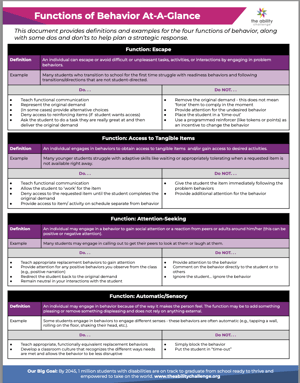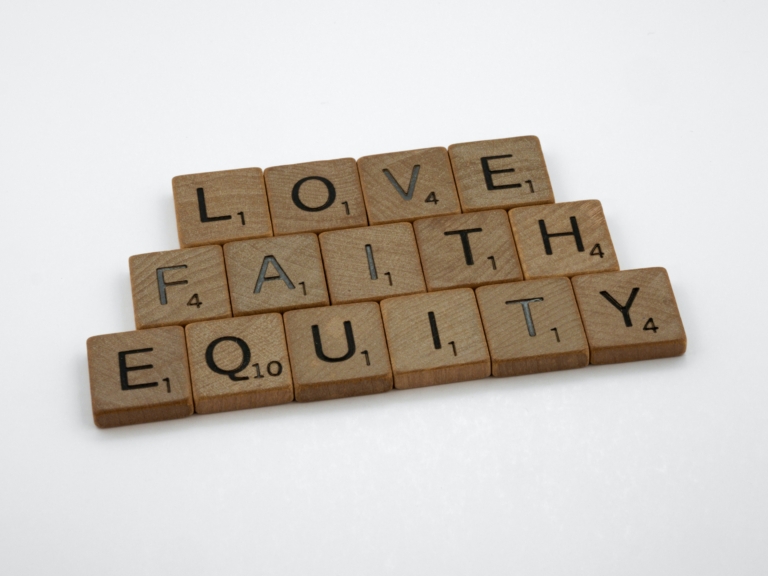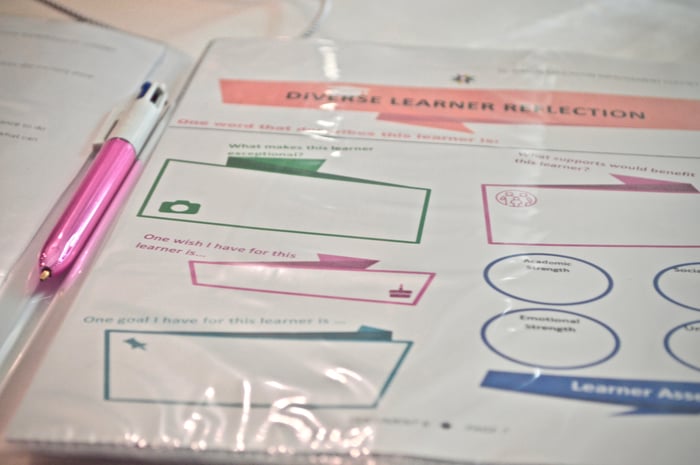Four Clues to Understanding Classroom Behaviors Administrators Should Know
Tools • 6 min read • Nov 8, 2022 10:26:00 PM • Written by: Sarah Sandelius

Overview
When administrators offer training on understanding why students exhibit certain classroom behaviors, teachers can respond in ways that work for all students.
 This “cheat sheet” presents everything you need to know in an easy, downloadable tool! Educators are reporting student behavior issues are on the rise following the pandemic.
This “cheat sheet” presents everything you need to know in an easy, downloadable tool! Educators are reporting student behavior issues are on the rise following the pandemic.
Many, including several of our partners, note concern about the ability of school staff to handle increasingly intense student behaviors. Our team recently conducted classroom observations in partner schools. The observations highlighted an interesting question: How frequently are administrators training teachers to understand the function of a student’s behavior to respond?
We’ve come to realize that the answer is “very few.” This seemingly crucial information for teachers and leaders is an obscure nugget granted to only the select few who become trained in behavioral intervention. How could that be? It’s a missed opportunity when we don’t prepare educators with the knowledge and skills to identify and respond to the variety of behaviors they see in a classroom. Classroom management practices and culture are key components, of course. But they don’t tell the full story of what it takes to create a productive, safe learning environment for all students.
In this blog, we explain the four functions of behavior and explore how understanding what triggers a student’s behavior will help you effectively respond to the behaviors and engage students in a productive learning environment.
 A Note about Equity
A Note about Equity
Before we dig in, it’s important to note that behavioral expectations are grounded in norms that may not reflect the true diversity of our country. We know that Black and brown children tend to be held to standards beyond their given age due to underlying biases. In many contexts, and for various reasons, adults in schools are less likely to show the same willingness to understand the behavior and motivations of Black and brown students and thoughtfully respond as they do with their White peers. When discussing behavior, we also need to be mindful of how our own experiences/biases may impact us and how systems present differently for students of color.
What are the Functions of Behavior?
A person engages in the same behavior repeatedly because it serves a purpose or function for that individual. If there were no function for the behavior, the behavior would not occur over time. All behavior has a function. Some functions are easier to see than others. Some behaviors can have more than one function.
The Four Functions of Behavior
All behavior can be categorized into four functions, each with a range of appropriate responses. Let’s take a closer look at each:
| Function | Definition | Example |
| Escape/ Avoidance | An individual can escape or avoid difficult or unpleasant tasks, activities, or interactions by engaging in problem behaviors. | Students who transition to school for the first time struggle with readiness behaviors and following transitions/directions that are not student-directed. |
| Access to Tangible Items | Individuals can engage in some behaviors to obtain access to tangible items/objects or gain access to desired activities. | Students struggling with adaptive skills (e.g., waiting, appropriately tolerating when a requested item is unavailable immediately) engage in tantrums or screaming. |
| Attention- Seeking | An individual may engage in a behavior to gain social attention or a reaction from peers or adults around him/her (this can be positive or negative attention). | Students may call out to get their peers to look at them, laugh at them, or gain attention from the adult(s) in the room. |
| Automatic/ Sensory | An individual may engage in the behavior because of the way it makes the person feel (self-stimulating); the function may be to add something pleasing or remove something displeasing and not rely on anything external. | A student may cover his ears in the presence of loud noises to remove the undesired noise or wave their hands/arms to manage overwhelming sensory information. |
How to Determine the Function(s) of a Behavior
This is where things may get a little complicated. You may not always know why a student behaves in a certain way. But there are clues, and as with most things in education, data is your friend. Behaviors have triggers (or antecedents) – you may not realize them at the moment, but they’re there.
There are two types:
- Fast triggers are what happens immediately before a behavior (e.g., if you take a toy away, and a student has a tantrum, it likely has the function of obtaining “access to tangible items)
- Slow triggers happen well before the behavior occurs but can be the cause of behavior (e.g., a student who saw a scary Halloween video last week, is reminded of it during an art assignment and tries to run out of the room to “escape/avoid” doing the assignment).



How many of us have had a student have a meltdown during stations only to find out later they had a rough morning on the way to school? Information like this is vital when considering how we respond. Yes, we know that triggers are not always obvious, and we often don’t know what triggers are until after a behavior has occurred. But our awareness that there is a trigger – and that the behavior is serving a purpose we need to understand – is key to getting students what they need and returning to a productive learning environment.
What to Do After You Determine the Function(s) of a Behavior
Effective behavior responses may sometimes take decades to master. What works as an effective strategy for students one day may not work the next. And sometimes, it may take more than a handful of tries to find even one strategy that works in a given case.
However, no matter the behavior, it is essential to avoid engaging in a power struggle with students. Respond, don’t react. It’s easy to confuse the two, but responding requires awareness of our triggers and needs and remaining emotionally regulated when addressing the behavior thoughtfully.
Want to Train Your Teachers On Strategies for Responding to Behavior?
Respond Not React: Understanding Root Causes of Student Behavior is ABC’s newest training. It provides a primer for all educators and leaders to understand why students exhibit particular behavior and to begin crafting data-driven responses that get results. Over either a full or half-day, participants engage in collaborative learning to identify when/why behaviors occur, develop knowledge of why specific responses are preferred and use a planning tool to design action steps for common classroom behaviors. Click here for a training overview.
Ready to Make an Impact For Your Most Diverse Learners?
Sarah Sandelius
Our Latest
Related Articles

November 14, 2019 | Data
Want to Connect More with your Diverse Learners?
Find effective strategies to meet the needs of diverse learners, engage them in class assignments, a...

September 14, 2021 | Tools
The IEP: What Classroom and Specials Teachers REALLY Need to Know
You can maximize the individualized education program. We’ve created an IEP review tool for classroo...
/AppleTree%20Case%20Study%20Shots/2023.01.24%20ABC%20AppleTree11.jpg?width=700&name=2023.01.24%20ABC%20AppleTree11.jpg)
March 27, 2024 | Administrators
Creating Inclusive Classrooms that Support Diverse Learners: A Model for Coaching Teachers
Learn how ABC's coaching model supports leaders and teachers in creating inclusive classrooms for di...
